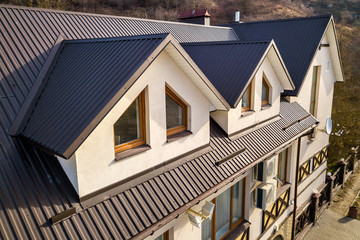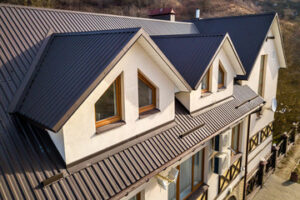Roofing & Stucco

Stucco is a common siding material that many people use in their homes. It’s easy to maintain, strong, and long-lasting if applied correctly. One of the major concerns is moisture damage to the wall sheathing. This can be prevented by a proper secondary drainage plane.
The right mix of Portland cement, lime, sand, and water provides a long-lasting, durable exterior finish. Buckley Roofing & Stucco is an excellent option for homes, as it is very low maintenance and can last up to 50 years when properly maintained.
A variety of Roofing & Stucco styles are available, including stucco panels, shake shingles, and lap. They are easy to install and can protect your home against the elements.
However, even the best-quality stucco installation can suffer damage if it is not properly waterproofed. You should always address any cracks in the wall or signs of moisture intrusion such as discoloration around windows and doors. You should also keep in mind that high-pressure water should never be used to clean the walls as it can force moisture where it does not belong.
Another way that your stucco may leak is if you have improperly flashed windows or doors. If you don’t have the proper flashing, it will allow moisture to enter your home through those openings and can eventually lead to serious structural issues in your walls.
This type of leak can be a major cause of expensive and costly repairs, so it’s important to be aware of how to prevent them from occurring in the first place. There are a number of things that you can do to help reduce the chances of your stucco leaking, such as making sure that all of your windows and doors have been flashed correctly, and installing an effective drainage mat on the wall.
Many people assume that stucco is naturally waterproof, but this is not the case. A combination of factors, such as differences in the backing materials, waterproofing stucco paint, and other elements, can dramatically alter the degree to which stucco is resistant to water.
One of the most effective ways to reduce the chance of your stucco leaking is to have the masonry company you hire to perform a waterproofing process prior to installing the stucco. This involves a three-layer approach that includes a weather-resistant barrier, a drainage matrix, and three layers of stucco.
The roof is the most vulnerable part of a home in a wildfire because it allows hot, burning embers to escape and spread through the structure. Using materials and design that make the roof fire resistant is key to protecting a home from a wildfire.
Roofing options like steel or metal shingles, standing seam, clay or concrete tiles, slate, and cementitious composite are all Class A fire-resistant. However, these options have their drawbacks – they can be more expensive to install and replace, and they add extra weight on top of a building.
Stucco is another building material that is a great option for homes in fire-prone areas. It’s made up of portland cement, sand, limestone, water, and other additives that make it highly fire-resistant.
It also is a good choice for homes in regions that experience frequent droughts, because it’s moisture-resistant and doesn’t expand or contract when exposed to water. Additionally, stucco is usually installed in multiple layers, which can help prevent the spread of fire.
The best way to avoid damage from fire is to build a home that has plenty of defensible space surrounding it. This includes ensuring that all windows and doors are protected from heat and that the roof is designed with steep pitches to help embers roll off.
A high-intensity fire can produce a blizzard of embers that can travel miles and cause severe, devastating damage to a house. These embers can be carried by fast-moving air currents and end up in the smallest places, including a home’s attic.
In addition to having a fire-resistant roof, a home should be built with a firewall or barrier that protects critical elements of the structure. Those elements include shaft enclosures, interior exit stairway, and ramp construction, enclosures for exit-access stairways, and other key components that occupants may use to get out of a home in an emergency.
Those critical components should be UBC approved and specially treated with fire-retardant chemicals. They should also be sized and shaped to prevent them from catching on fire in the event of a wildfire.

